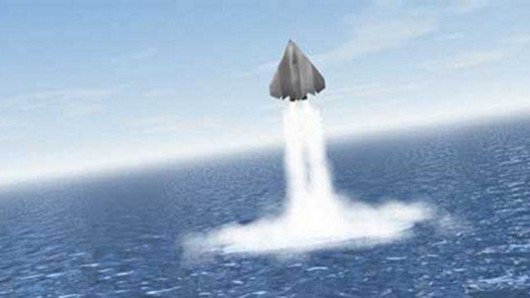DARPA wants to hide naval assets on the sea bottom
By David Szondy
January 14, 2013

The DARPA project envisions deploying assets such as this earlier DARPA concept, the Cormant underwater UAV
The Defense Advanced Research Projects Agency (DARPA) has seen the future of naval warfare and it’s falling upward. As part of an effort to reduce the logistics of sending equipment into trouble areas, the agency’s Upward Falling Payloads project is aimed at developing storage capsules capable of remaining on the deep seabed for years. These would contain non-lethal military assets that could be deployed on the spot years in advance and rise to the surface as needed.
Forward deploying caches of military equipment isn't a new idea. For centuries, armies and navies have left supply dumps at strategic locations for future use, and even today the US military has equipment stored in friendly nations in case of a sudden crisis. DARPA wants to take this a step further by placing assets in the deep sea in capsules protected by ambient pressure and equipped with receivers, waiting for the signal to deploy and “fall upward” to the surface.
The purpose of these capsules is to provide the military with operational support and situational awareness by means of unmanned, distributed systems. Currently, laying down a sensor network in a remote part of the world or deploying a UAV is a major operation that can take weeks or even months to carry out – especially if the other side has started shooting. This makes underwater pre-deployment very attractive. DARPA is interested because the deep sea provides “cheap stealth.” A capsule sitting dormant on the sea bottom is extremely difficult to detect and even harder to recover, so it’s an ideal location to forward deploy assets such as sensor packs, communication relays, electronic intelligence monitors and even unmanned aircraft.
DARPA is looking at the experience of the scientific community and the telecommunications and oil-exploration industries, who have had over a century of dealing with deep-sea engineering. Laying down and repairing cables, installing drill heads and pumps – these all have provided industry with a huge library of knowledge and skills for working in the deep sea that DARPA hopes to tap in developing the capsules.
The challenges don't lie only in making capsules that can survive for years on the seabed, but also in communicating with them when it's time to deploy. The deep sea is a very complex region filled with layers of water of different levels of salinity, density, and temperature, and mixed in with this is the sea life that make a cacophony of noises. This makes communicating even with submarines loaded with state of the art gear difficult, but finding a reliable way to contact a dormant capsule after years of laying in the silt poses remarkable challenges whether by means of radio, sonar or lasers.
Because of the difficulty of retrieving the capsules, DARPA is concentrating on non-lethal assets, so there’s no conflict with treaties involving munitions and their disposal.
Source: DARPA
Copyright © gizmag 2003 - 2013 To subscribe or visit go to: http://www.gizmag.com
